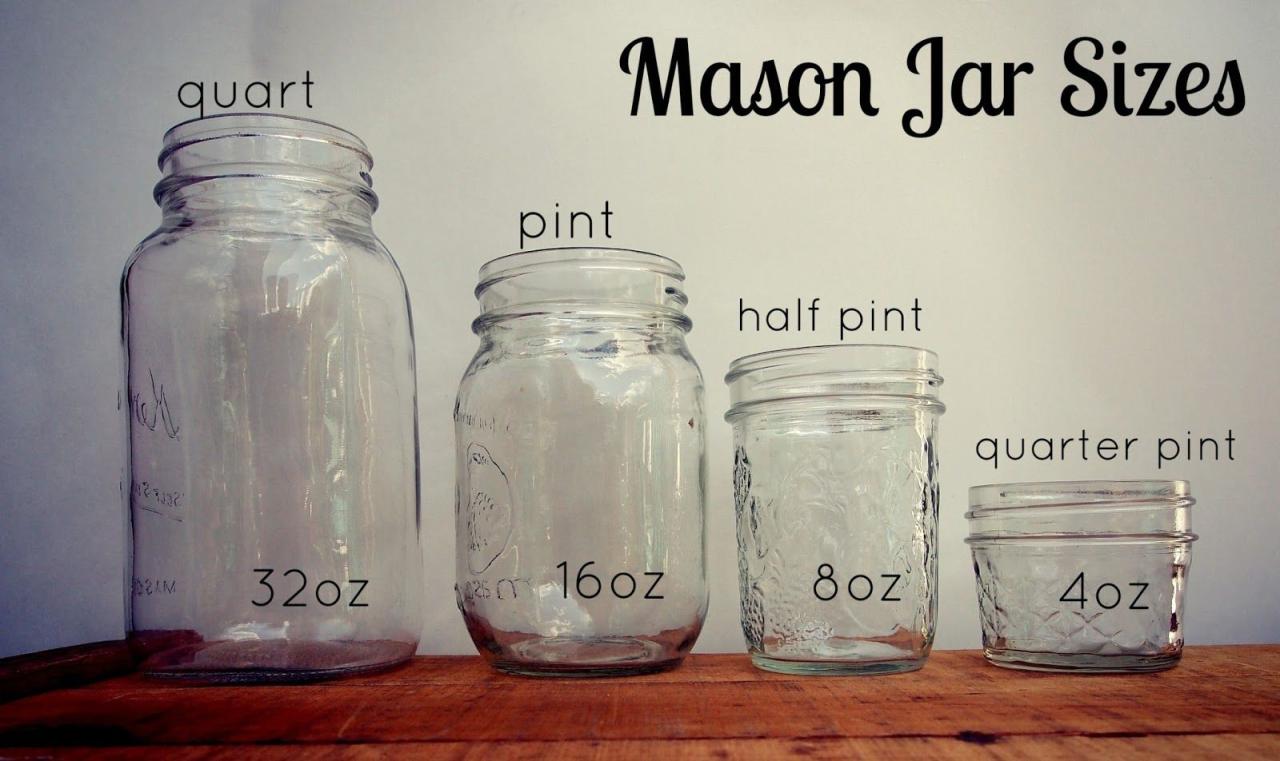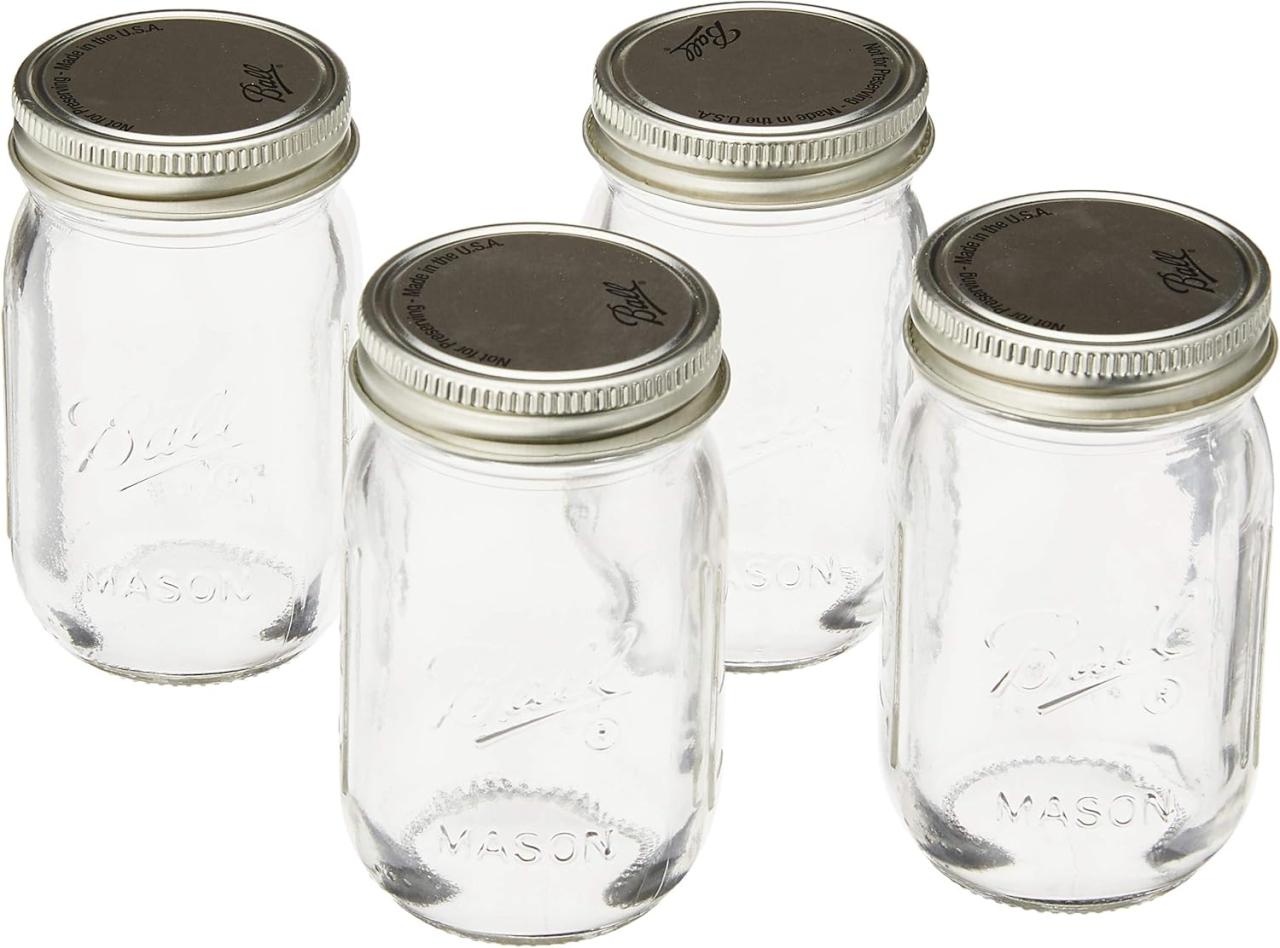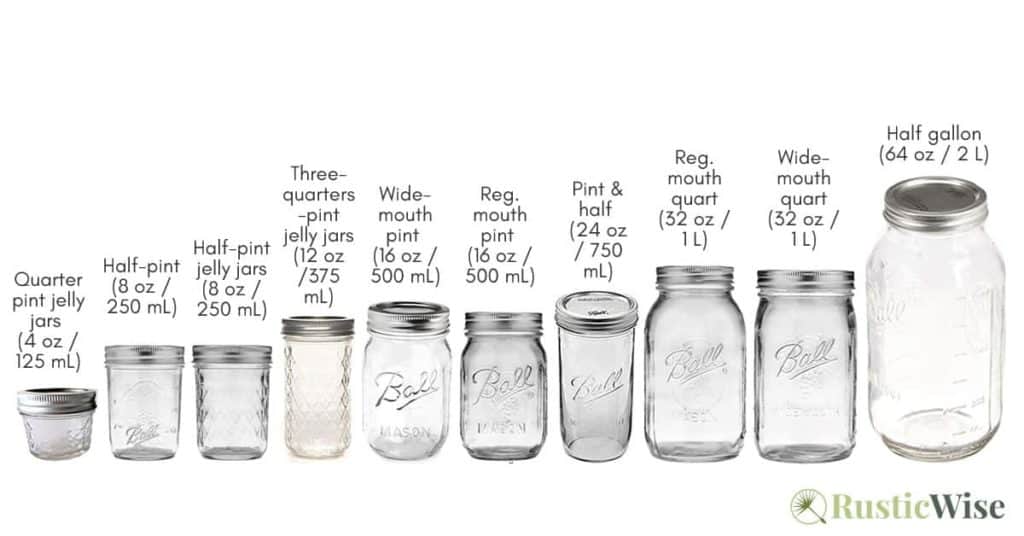Volume and Capacity: How Much In A Mason Jar

How much in a mason jar – When dealing with mason jars, understanding their volume and capacity is crucial. Volume refers to the amount of three-dimensional space occupied by a substance, while capacity represents the maximum amount a container can hold without overflowing.
Mason Jar Sizes and Capacities
Mason jars come in various sizes, each with a specific volume and capacity. The following table provides a comprehensive overview of common mason jar sizes and their corresponding volumes in ounces, cups, and milliliters:
| Size | Volume (oz) | Volume (cups) | Volume (ml) |
|---|---|---|---|
| 4 oz | 1/2 | 1/8 | 120 |
| 8 oz | 1 | 1/4 | 240 |
| 12 oz | 1 1/2 | 3/8 | 360 |
| 16 oz | 2 | 1/2 | 480 |
| 32 oz | 4 | 1 | 960 |
| 64 oz | 8 | 2 | 1920 |
Measuring Techniques

Measuring the volume of liquids and solids in mason jars is crucial for accurate cooking, baking, and preserving. Various techniques can be employed, each with its advantages and limitations.
Using Measuring Cups
- Dry measuring cups are designed specifically for measuring dry ingredients like flour, sugar, and spices. They come in various sizes, ranging from 1/4 cup to 1 cup.
- Liquid measuring cups, on the other hand, are used for measuring liquids like water, milk, and oil. They typically have a spout for easy pouring and are marked with both metric and imperial units.
Using Measuring Spoons, How much in a mason jar
- Measuring spoons are available in a set of different sizes, including 1/4 teaspoon, 1/2 teaspoon, 1 teaspoon, and 1 tablespoon. They are used for measuring small amounts of ingredients, such as spices, baking powder, and salt.
Using Scales
- Scales, both digital and analog, provide a precise method of measuring the weight of ingredients. They are particularly useful for measuring large quantities or for ingredients that are not easily measured by volume, such as meat or vegetables.
Accuracy and Precision
The accuracy of a measuring technique refers to how close the measured value is to the true value, while precision refers to how consistent the measurements are when repeated. Generally, using a scale provides the highest accuracy and precision, followed by measuring cups and measuring spoons.
Common Household Items

Common household items can be used to approximate volume measurements in mason jars. These items are readily available, making them convenient for quick and easy measurements.
Browse the implementation of does jared buy jewelry in real-world situations to understand its applications.
To use these items, simply fill the mason jar with the item until it reaches the desired level. Then, count the number of items used to fill the jar. This will give you an approximate volume measurement.
Rice
- 1 cup of rice = approximately 1 pint
- 2 cups of rice = approximately 1 quart
Beans
- 1 cup of beans = approximately 1 pint
- 2 cups of beans = approximately 1 quart
Water
- 1 cup of water = approximately 8 fluid ounces
- 2 cups of water = approximately 1 pint
- 4 cups of water = approximately 1 quart
Visual Aids and Illustrations
Visual aids and illustrations can be helpful for understanding the volume and capacity of mason jars. These aids can provide a clear and concise representation of the different sizes and shapes of mason jars, making it easier to compare and choose the right jar for your needs.
One common type of visual aid is a diagram. Diagrams can show the different parts of a mason jar, such as the rim, the body, and the base. They can also show the dimensions of the jar, such as the height, width, and depth.
This information can be helpful for determining how much liquid or food a jar can hold.
Images and Photographs
Images and photographs can also be helpful for understanding the volume and capacity of mason jars. These aids can provide a realistic representation of the jars, making it easier to see how they will look in your kitchen or pantry.
Images and photographs can also be used to compare the sizes of different jars, making it easier to choose the right jar for your needs.
Tables and Infographics
Tables and infographics can be helpful for summarizing the key measurements and comparisons of mason jars. These aids can provide a quick and easy way to see the different sizes and capacities of jars, making it easier to choose the right jar for your needs.
Practical Applications
Understanding the volume of mason jars has numerous practical applications, from cooking to storage and organization. Accurate volume measurements ensure precise ingredient ratios, proper food preservation, and efficient space utilization.
In cooking, knowing the volume of a mason jar is crucial for measuring ingredients accurately. Following recipes precisely ensures consistent results and prevents dishes from being too salty, bland, or over/undercooked.
Preserving Food
When preserving food, it’s essential to use the correct jar size to ensure proper sealing and prevent spoilage. Overfilling jars can lead to improper sealing, while underfilling can leave too much headspace, reducing the shelf life of the preserved food.
Organizing Small Items
Mason jars are versatile storage containers for organizing small items such as buttons, beads, screws, and office supplies. Knowing the volume of each jar helps determine the most suitable size for storing specific items, maximizing space utilization and keeping drawers and shelves tidy.
One thought on “How Much Fits in a Mason Jar: Unlocking Its Versatile Capacity”